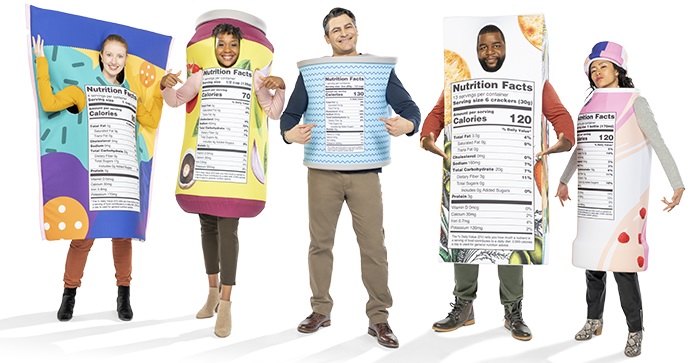If you haven’t already noticed the changes made to the Nutrition Facts Label, your next visit to the grocery store will be a surprise to you. As of last year, The Food and Drug Administration had set new guidelines for the label that required a bit of an overhaul to meet. The changes were made in an effort to provide updated nutritional information based on recent trends in the American diet and are required to be included on any food product (imported or native to the U.S) as of the start of 2020.
Beginning with likely the most noticeable change of the bunch, calorie count. This value has seemingly taken priority over all other values on the label. It now has the largest text font, in addition to being bolded. Nearly impossible to miss on first glance of any food product’s label, and for good reason. In correlation with this, there were changes made to the serving size information for each food product as well. The way the label is read is based entirely off of the suggested serving size that you’ll find above the calorie totals on any product. These recent changes have reconsidered just how many servings belong in particular food products, and are now represented accordingly.
Perhaps less noticeable, but just as important as the previous changes, are the inclusion of the types of fat each food product is made up of. Previously this information was excluded, as research had previously indicated that the calories from fat was more important. New findings indicate that the true precursor to obesity rates are the amount of the different types of fat people are consuming. The label now includes values of saturated, trans, and unsaturated fats for each food product. These same changes are reflected in the inclusion of additional nutrients previously left off the label as well.
Perhaps the most important change for parents of young children comes in the form of the added sugars section of the new label. These added sugars are included in many products marketed toward children, and previously it was hard to decipher what was truly a healthy choice for your children. Now, with this critical information, it’s much easier to discern between the healthy and unhealthy products for children. Remember, avoiding large amounts of added sugar is an excellent way to maintain a healthy diet for children.

The majority of these changes were made in hopes that it’d be easier for families to approach a healthier diet and lifestyle. However, while these changes are a great start in families better understanding the food they’re consuming, it requires a bit more due diligence. Be sure to carefully scan the label on your next grocery store visit. For additional information on the way the Nutrition Facts Label has changed this past year, please review the infographic below.
Author bio: John Hinchey is VP of Sales for Westfalia Technologies, Inc., a leading provider of logistics solutions for plants, warehouses and distribution centers. He has more than 20 years of experience in manufacturing and warehouse automation.

